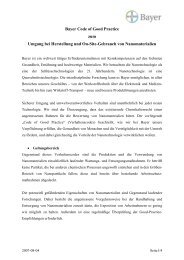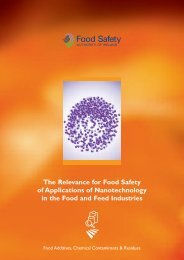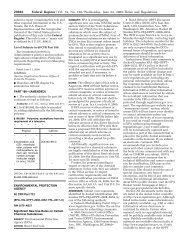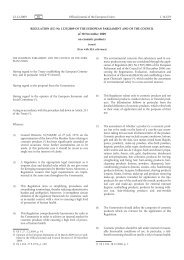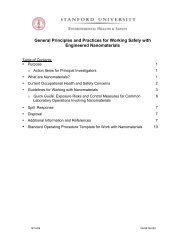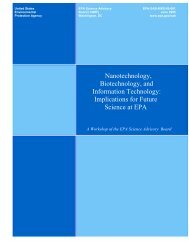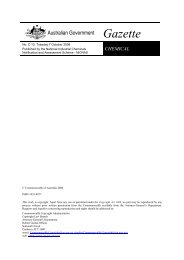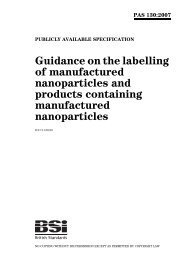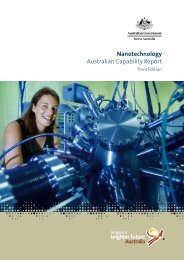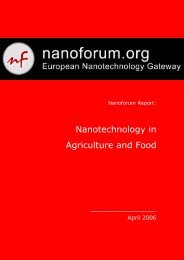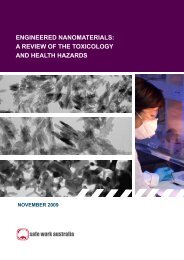Proposal for Regulatory Reform of Industrial Nanomaterials
Proposal for Regulatory Reform of Industrial Nanomaterials
Proposal for Regulatory Reform of Industrial Nanomaterials
You also want an ePaper? Increase the reach of your titles
YUMPU automatically turns print PDFs into web optimized ePapers that Google loves.
Stream 2Concurrent with activities identified in stream 1, NICNAS is exploring the feasibility <strong>of</strong> implementing amore comprehensive regulatory proposal <strong>for</strong> nano-<strong>for</strong>ms <strong>of</strong> existing chemicals that addresses triggersidentified in the Monash Report and acknowledges:• the lack <strong>of</strong> comprehensive in<strong>for</strong>mation on properties and health, safety and environmental effects <strong>of</strong>nanomaterials and• the uncertainty surrounding the applicability <strong>of</strong> conventional hazard, exposure and risk assessmentmethodologiesand is consistent with ongoing national and international ef<strong>for</strong>ts to address these challenges.Please note that this proposal is contingent on regulatory impact analysis.It is desirable that such a program include:• the ability to reliably identify introducers <strong>of</strong> nano<strong>for</strong>ms <strong>of</strong> existing chemicals,• knowledge <strong>of</strong> specific nano<strong>for</strong>ms <strong>of</strong> existing chemicals being introduced, volume in<strong>for</strong>mation and usescenarios,• the ability to ensure human health and safety and environmental protection is maintained throughen<strong>for</strong>ceable conditions <strong>of</strong> use, where such measures are warranted,• health and environmental risk assessments to be based on the best available scientific in<strong>for</strong>mation,• the ability <strong>of</strong> the regulator to obtain “non-standard” in<strong>for</strong>mation relevant to the risk assessment on acase by case basis,• adopting measures to protect human health and/or the environment where the best available scientificin<strong>for</strong>mation is insufficient to support safety <strong>of</strong> the material,• the ability to review risk assessment decisions as new scientific in<strong>for</strong>mation becomes available,• the regulatory impost on industry is commensurate with the risk posed by these materials (to theextent this can be determined up front).Please read the following section in conjunction with the flowchart supplied in Attachment 7.<strong>Proposal</strong>:The NICNAS new chemicals permit framework could be used as a potential model (modified as required).The features <strong>of</strong> the permit framework that are suitable <strong>for</strong> this purpose include:• nanomaterials will be assessed on a case by case, using best available scientific in<strong>for</strong>mation• NICNAS can request “non-standard” in<strong>for</strong>mation relevant to the risk assessment as required• assessed nano<strong>for</strong>ms <strong>of</strong> existing chemicals will not be included on the inventory and each introducerwill need to seek “permission to introduce” (<strong>for</strong> example through a “permit” application) there<strong>for</strong>eNICNAS will have knowledge <strong>of</strong> introducers <strong>of</strong> specific nanomaterials at all times.• the ability to impose mandatory, auditable conditions <strong>of</strong> introduction when granting “permission tointroduce”• the ability to amend permit conditions or revoke permits (hence introduction) should significantadverse health and environmental effects be identified.• provisions <strong>for</strong> recognising commercially confidential in<strong>for</strong>mation.14



